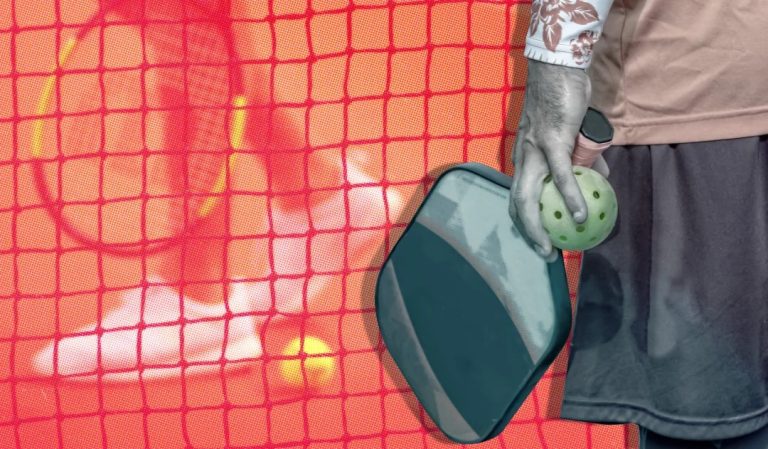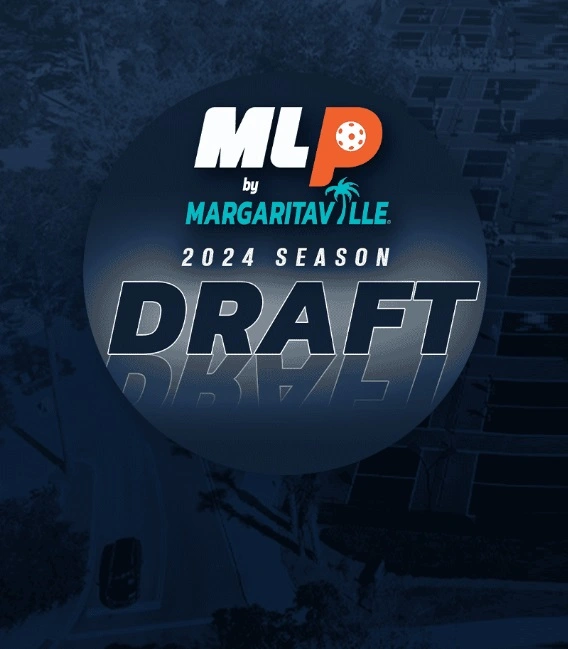Pickleball Evolution
Pickleball Evolution: From Backyard Game to Global Sport
Pickleball began its journey in 1965 on Bainbridge Island, Washington. Three innovative fathers—Joel Pritchard, Bill Bell, and Barney McCallum—created it to alleviate their children’s boredom. Pickleball Evolution – Originally a backyard activity, it quickly became a sport beloved among retirees for its gentle pace and social nature. Over the years, it’s appeal broadened significantly, attracting skilled players from disciplines like tennis, racquetball, and ping pong. These new entrants have infused the game with their diverse tactics and competitive spirit, transforming pickleball from a modest family activity into a competitive and globally recognized sport with a dedicated following worldwide.
Equipment
As pickleball has become a global sports sensation. Equipment technology has also advanced. Today’s paddles use materials like graphite and composites. This improves strength, durability, and control. Paddles now have a larger sweet spot. The balls are more durable for indoor and outdoor play. They feature designs that affect speed and flight stability.
This evolution in equipment technology has significantly affected the pace and tempo of the game. The new paddles facilitate a more powerful and precise game, allowing players to execute aggressive shots with increased accuracy. Consequently, matches have become faster-paced, with a greater emphasis on speed and power. This shift challenges players to develop quicker reflexes and more strategic game plans to keep up with the heightened intensity of play. As a result, pickleball is not only attracting younger, more athletic players but is also compelling the sport’s traditionalists to adapt their strategies to remain competitive.
Awakening the Beast
Pickleball’s popularity has grown, attracting diverse athletes. It now includes ex-tennis, badminton, racquetball, and table tennis players. This influx shifted the gameplay dynamically. The game has evolved into a faster, more aggressive style. Today, pickleball is more than a leisure activity. It has become a highly competitive sport. It demands strategic finesse and athletic prowess.
The Pickleball Evolution Problem
This evolution, however, has sparked a rift within the normally inclusive pickleball community. On one side are the purists, who value the sport’s original ethos—strategic play that emphasizes patience, precision, and social interaction. These players often favor a slower, more calculated approach that relies on placement and finesse rather than sheer power. On the other side are the bangers, a term that has emerged to describe players who leverage their athletic backgrounds to play a high-powered game focused on speed and force.
Bangers use aggressive drives, smashes, and fast volleys. They transform pickleball into a fast-paced reflex and stamina battle. Consequently, this shift sparks debates within clubs. Players discuss pickleball’s true spirit and its future direction. Some view this evolution as exciting and natural. However, others fear that competition overshadows pickleball’s unique, accessible traits.
Finding a Solution
The challenge now facing the pickleball community is to find a balance that respects the sport’s roots while embracing the innovations that attract a broader audience and enhance its appeal as a spectator sport. The ongoing dialogue between purists and bangers is not just about how pickleball is played; it’s also about what kind of community pickleball wants to cultivate as it grows into a global phenomenon.
The Shift Towards a Faster Game
The evolution of pickleball can largely be attributed to advancements in paddle technology and an increase in player skill level. Modern paddles, which are more technologically advanced, allow for greater precision and power, facilitating a game that is much faster than the pickleball of decades past.
As players from racquet sports converge on pickleball courts, they bring with them skills that transform the game’s tempo and tactics. Where once the game was dominated by strategic placement and patience, today’s pickleball includes powerful drives and quick volleys, creating exhilarating rallies that attract spectators and challenge every participant’s reflexes and strategy.
Navigating the New Pace: Strategies for Traditionalists
For players accustomed to the traditional pickleball style, adjusting to the faster pace can be daunting. However, there are effective strategies that can help these players adapt while still leveraging their strategic depth. Skills such as precise dinking, controlled lobs, and strategic placement remain crucial and can be used to counteract the power-driven style of newer players.
The evolution of pickleball has introduced a significant challenge for the retiree crowd, a core part of the sport’s community. These players, who have long cherished the game for its accessibility and social nature, now find the increased pace and athleticism of younger players to be a barrier to their continued enjoyment and competitiveness in the sport. This shift has created an “elephant in the room”: how to ensure pickleball remains inclusive and enjoyable for all, regardless of age or athletic ability.
Addressing the Challenge
- Skill-Based Matchmaking: Organize games and tournaments based on true current skill levels rather than age as in the past. This allows everyone to play competitively against players with similar abilities, regardless of age, and ensures a more enjoyable and fair experience for everyone.
- Specialized Clinics and Coaching: Offer clinics that focus on strategies for handling faster-paced games. Coaches can teach techniques that help mitigate the advantages of power and speed, focusing on placement, anticipation, and tactical play.
- Equipment and Court Adjustments: Consider the use of different types of balls or paddles that could help level the playing field. Softer balls that slow the game down a bit could be used in certain matches, particularly in community-centered recreational play.
- Creating Divisions or Leagues: Establish leagues that cater specifically to traditional play styles, where the emphasis is on strategy over speed and power. This would allow retirees and others who prefer a slower pace to compete under rules that favor their strengths.
- Promoting Community Engagement: Continue to emphasize the social aspects of pickleball that make it such a beloved sport among retirees. Organizing social events, mixers, and round-robin formats where the focus is on fun and interaction can help maintain the inclusive community spirit.
Coaching in the New Era
Pickleball coaching has had to evolve alongside the sport. Today’s coaches need to balance teaching the finesse and strategic play that define classic pickleball with the aggressive techniques that the modern game demands. This dual-focus approach ensures players are well-rounded and capable of competing under various play styles.
Advanced Training Techniques:
- Video Analysis: Coaches are increasingly using video analysis tools to provide players with detailed feedback on their gameplay, including stance, paddle position, and timing. This technology allows players to visualize their actions and understand the tactical implications of their moves in real-time.
- Simulation Drills: To better prepare players for the aggressive style prevalent in modern pickleball, coaches are implementing simulation drills that mimic high-pressure scenarios. These drills help players practice quick decision-making and effective counter-attacks under game-like conditions.
Personalized Coaching Plans:
- Customized Player Development: Recognizing that players come with different physical capabilities and learning styles, modern coaching involves personalized development plans. These plans address individual weaknesses and strengths, allowing players to progress at their own pace while maximizing their potential.
- Mental and Tactical Training: As the game becomes more competitive, mental toughness and tactical awareness are as crucial as physical skills. Coaches now emphasize psychological strategies, including concentration, composure, and resilience, which are essential for success in faster, more aggressive matches.
Integrating New Skill Sets:
- Incorporating Cross-Training: Many coaches encourage cross-training in other racquet sports to enhance agility, power, and spatial awareness. Activities such as squash or tennis can complement a player’s skill set, adding a new dimension to their game.
- Agility and Speed Workouts: Specific exercises aimed at improving agility, reflexes, and speed are becoming staples in pickleball training routines. These workouts help players keep up with the fast pace of modern pickleball and effectively respond to aggressive plays.
Community and Workshop Engagement:
- Coaching Workshops and Certifications: To stay abreast of the latest trends and techniques in pickleball coaching, many coaches participate in workshops and seek certification from reputable pickleball organizations. This continuous learning ensures that coaches can teach the most current and effective strategies.
- Online Coaching Platforms: Utilizing online platforms, coaches can reach a broader audience, offering tutorials, live sessions, and tailored feedback. This approach not only democratizes access to top-level coaching but also fosters a more connected global pickleball community.
Adapting to Player Demographics:
- Youth Programs: With more young players entering the sport, coaches are creating programs specifically tailored to youth, focusing on developing skills, sportsmanship, and a love for the game.
- Senior Adaptive Strategies: For older players, coaches focus on techniques that require less physical strain while maximizing strategic play. This could include optimizing paddle grip, improving positional play, and mastering low-impact movements that are effective against power players.
The Future of Pickleball
Looking ahead, pickleball continues to accelerate. Its inclusion in more international competitions attracts younger players. This makes the sport more diverse and competitive. The future might bring better equipment and more professional tournaments. Additionally, new rules could adapt to changing gameplay dynamics.
Advancements in Equipment Technology:
- Paddle Innovation: Future developments in paddle technology are likely to focus on new materials that enhance performance, such as carbon fiber composites that provide superior strength and lightweight properties. Innovations may also include smart paddles equipped with sensors that track player performance and technique, offering insights and data-driven feedback to improve their game.
- Ball Technology: As the game evolves, so too will the design of pickleball balls. Future balls may feature materials that adjust to weather conditions, maintain optimal bounce and hardness, and offer varying degrees of spin and speed to suit different skill levels or play styles.
Rule Modifications to Shape Gameplay:
- Service Rules: Changes to service rules, such as allowing different service styles or restricting the service box area, could significantly alter the pace of the game. These changes might be implemented to balance the advantage between serving and receiving players, ensuring a fair and competitive environment.
- Scoring System Adjustments: Modifying the scoring system, such as adopting rally scoring where points can be won by both the serving and receiving teams, could speed up games and make matches more dynamic and unpredictable.
- Equipment Specifications: New rules might set stricter specifications for equipment, such as paddle size and ball type, to standardize play across different levels and ensure that technology enhances the sport without overshadowing player skill.
Expanding the Professional Scene:
- Professional Tournaments: As pickleball gains a foothold in more countries, we can expect an increase in the number and scale of professional tournaments. This expansion will not only provide more opportunities for players to compete but will also help to elevate the sport’s profile on a global stage.
- Youth Engagement: Targeting younger players through school programs and youth leagues will be crucial for the sustained growth of pickleball. By introducing the sport at a younger age, pickleball can cultivate a new generation of players who might carry the sport to higher levels of athleticism and competition.
- Media and Sponsorship: Enhanced media coverage and sponsorship deals will likely follow the sport’s rise in popularity, bringing more attention to pickleball and encouraging investment in its development. This increased exposure could lead to more comprehensive training resources and greater professional opportunities for players.
Pickleball Evolution
From its modest inception to its status as a burgeoning global sport, pickleball has undergone significant transformations. For enthusiasts, whether they’re seasoned players or newcomers, understanding the evolution of pickleball is key to appreciating and excelling in today’s game. As pickleball continues to grow, it remains a unique blend of inclusivity and competitive intensity, offering something for everyone.
The Question
As we stand at this pivotal moment in the sport’s history, the question now turns to you, the players and supporters of pickleball. Will you embrace the new evolution of the sport and actively contribute to its burgeoning community? Or will you step back, potentially fading into the shadows, as the game evolves beyond its original form?
The future of pickleball depends on the choices we make today. Do we push for innovations that make the game faster and more competitive, or do we hold on to traditions that have made it beloved by so many? Can we find a balance that respects the past while boldly stepping into the future? Your involvement in local clubs, participation in tournaments, and advocacy for the sport are more crucial than ever.
Let’s Shape the Future
Engaging with pickleball not only as players but also as community influencers, we have the power to shape the direction of this sport. By supporting new developments and spreading the passion for pickleball, you help ensure that it remains vibrant and accessible for future generations. Will you work to continue building the buzz around pickleball, or will the shadows of a quieter existence away from the courts beckon?
As pickleball continues its global ascent, let us reflect on our role within this community. It’s time to decide whether to step up and drive the sport forward or to watch from the sidelines as others dictate its path. The choice is yours, and every player, coach, and enthusiast holds a part of pickleball’s future evolution in their hands.







